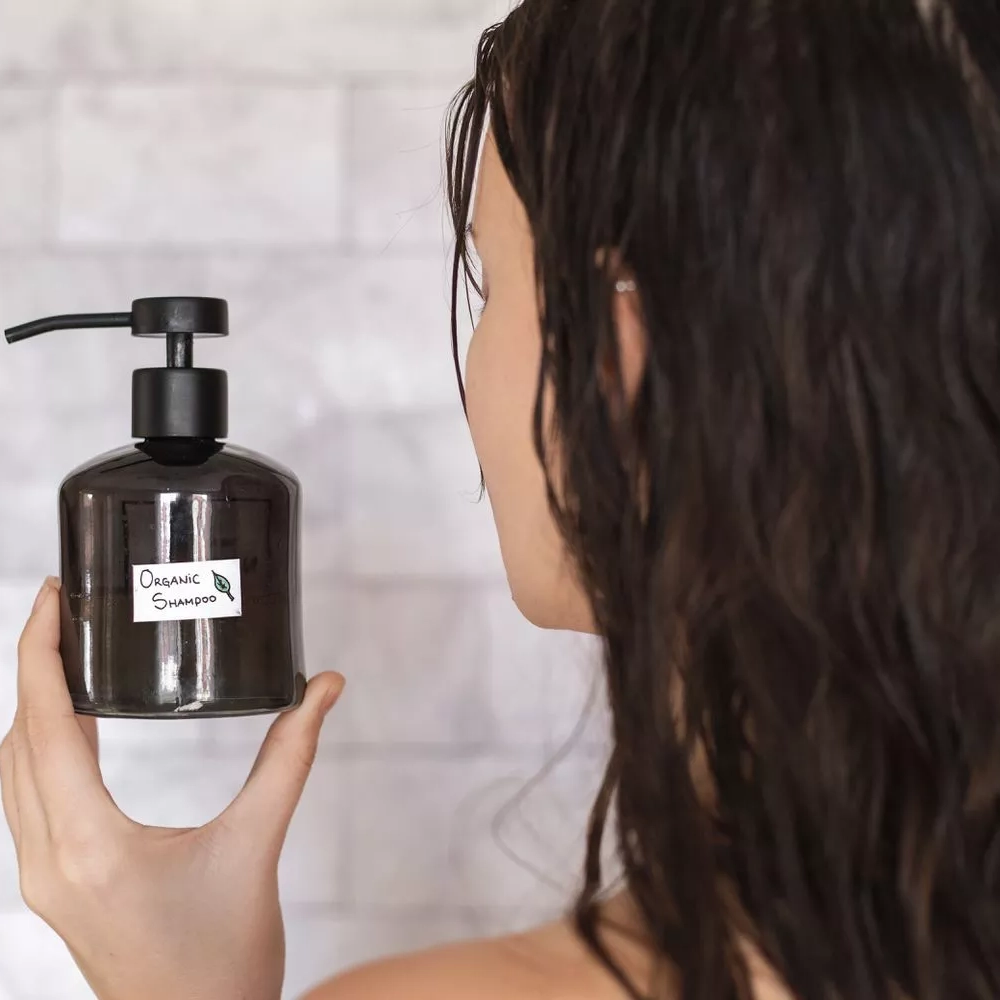Choosing the right ingredients for homemade shampoo
When it comes to making your own homemade shampoo, choosing the right ingredients is key. With so many options available, it can be overwhelming to determine which ones are best suited for your hair type and desired results. However, by understanding the benefits of natural ingredients and considering your specific needs, you can create a personalized shampoo recipe that leaves your hair looking and feeling its best.
One important factor to consider when selecting ingredients for your homemade shampoo is your hair type. Whether you have dry, oily, or normal hair, certain ingredients can help address specific concerns. For example, if you have dry hair, you may want to look for moisturizing ingredients like coconut oil or honey. On the other hand, if you have oily hair, you might opt for ingredients like lemon juice or tea tree oil, which can help control excess oil production.
Another aspect to keep in mind is the desired benefits of the ingredients. Some natural ingredients are known for their nourishing properties, such as aloe vera or argan oil, which can help improve the overall health of your hair. Others, like lavender or rosemary essential oils, are known for their soothing and calming effects on the scalp. By understanding the specific benefits of each ingredient, you can make an informed decision about which ones to include in your homemade shampoo recipe.
In addition, personalizing your homemade shampoo is all about experimentation and customization. You can start with a basic recipe and then add or adjust ingredients based on your preferences. For example, if you prefer a more fragrant shampoo, you can add a few drops of your favorite essential oil. If you feel like your hair needs extra volume, you can incorporate ingredients like sea salt or baking soda.
To keep track of your ingredients and their proportions, creating a table can be helpful. This way, you have a clear overview of what goes into your homemade shampoo and can easily make adjustments if needed. You can list the ingredients in one column and their respective measurements in another, making it easy to replicate or modify your recipe in the future.
Developing a DIY shampoo recipe
Developing a DIY shampoo recipe can be a fun and rewarding experience. By making your own shampoo, you have the freedom to choose the ingredients that go into it, ensuring that you are using only the best and most natural products for your hair. Not only is this a healthier option, but it can also save you money in the long run. With a little bit of knowledge and experimentation, you can create a shampoo recipe that is tailored to your specific hair type and needs.
When developing your own shampoo recipe, it is important to choose the right ingredients. Natural ingredients are the key to a successful homemade shampoo. Look for ingredients such as castile soap, essential oils, and carrier oils. Castile soap acts as the base for your shampoo and helps to cleanse the hair and scalp. Essential oils not only add a lovely scent to your shampoo but also provide various benefits depending on the oil chosen. Carrier oils are used to moisturize and nourish the hair, preventing it from becoming dry and brittle.
Once you have gathered your ingredients, it is time to start experimenting. The step-by-step process of making homemade shampoo involves mixing the ingredients in the right proportions and testing the resulting recipe on your hair. Begin by combining the castile soap with the carrier oil of your choice. Add a few drops of essential oil for fragrance and additional benefits. Mix the ingredients well and then use a small amount of the shampoo on your hair. Pay attention to how your hair feels and looks after using the shampoo. Adjust the recipe as necessary based on your hair type and desired results.
To customize your homemade shampoo, consider adding additional ingredients that cater to your hair’s needs. For example, if you have oily hair, you can incorporate ingredients such as lemon juice or apple cider vinegar to help balance the scalp’s natural oils. If you have dry hair, try adding honey or aloe vera gel to provide extra moisture. The possibilities are endless when it comes to customizing your shampoo recipe.
| BENEFITS OF DIY SHAMPOO |
|---|
| 1. Avoids harmful chemicals found in commercial shampoos. |
| 2. Tailored to your specific hair type and needs. |
| 3. More environmentally friendly as you can avoid plastic packaging |
| 4. Can save you money in the long run. |
| 5. Fun and rewarding to create your own beauty products. |
Testing and adjusting your homemade shampoo formula is an integral part of the process. Keep track of the ingredients and proportions used in each batch of shampoo, and take note of how your hair responds to them. If you find that your hair is becoming too oily or dry, make the necessary adjustments to achieve the desired balance. Remember, everyone’s hair is unique, so what works for someone else may not work for you. Be patient and persistent in finding the perfect formula for your hair.
Maintaining and storing your homemade shampoo is important to ensure its longevity and effectiveness. Store your shampoo in a clean, airtight container to prevent contamination and keep it in a cool and dry place. Avoid exposing it to sunlight or heat, as this can degrade the quality of the ingredients. It is also a good idea to make small batches of shampoo at a time to ensure freshness and avoid wasting any ingredients.
Developing your own DIY shampoo recipe allows you to have complete control over what goes onto your hair. It is an opportunity to create a product that is tailored to your specific needs and preferences. By choosing the right ingredients, experimenting with different combinations, and adjusting as necessary, you can create a shampoo that not only cleanses but also nourishes and enhances the health and beauty of your hair.
The step-by-step process of making homemade shampoo
Homemade shampoo is a popular alternative to store-bought products because it allows you to have full control over the ingredients used. By creating your shampoo at home, you can ensure that it is free from harsh chemicals and tailored to your specific hair needs. In this blog post, we will guide you through the step-by-step process of making your own homemade shampoo.
Before you begin, it’s essential to gather all the necessary ingredients for your homemade shampoo recipe. Choose the right ingredients based on your hair type and concerns. For example, if you have dry hair, moisturizing ingredients like avocado oil or coconut oil may be beneficial. On the other hand, if you have oily hair, you might opt for ingredients like tea tree oil or lemon juice to help balance the scalp’s natural oils.
Once you have selected the ingredients, it’s time to follow the step-by-step process of making your homemade shampoo. Start by mixing the liquid components, such as water or aloe vera gel, with the chosen carrier oil. You can add a few drops of essential oils for fragrance and additional benefits. Next, slowly incorporate the chosen surfactant, such as castile soap or liquid soap, into the mixture. Finally, whisk the ingredients together until they are well combined.
To maintain the content richness of your homemade shampoo, consider adding beneficial additives like glycerin, rosemary extract, or even herbal infusions. These additives can enhance the shampoo’s properties and promote healthy hair growth. It’s essential to research and choose additives that align with your hair goals.
To better understand the process, let’s summarize the steps in a table:
| Step | Description |
|---|---|
| 1 | Gather the ingredients based on your hair type and concerns. |
| 2 | Mix the liquid components and carrier oil together. |
| 3 | Add surfactant slowly while stirring continuously. |
| 4 | Whisk the ingredients until well combined. |
| 5 | Add beneficial additives and mix thoroughly. |
Customizing your homemade shampoo is an excellent way to tailor it to your specific hair needs. You can experiment with different essential oils, carrier oils, and additives to create a personalized shampoo formulation. Remember to keep track of the amounts and combinations you use, as this will help you fine-tune the formula over time.
After creating your homemade shampoo, it’s important to test and adjust the formula as needed. Use a small amount of shampoo and observe how it works for your hair. If it lathers well, cleanses effectively, and leaves your hair feeling nourished, you have likely found the right balance of ingredients. However, if you experience any issues, such as excessive dryness or increased oiliness, you may need to make some adjustments to the recipe.
Proper maintenance and storage of your homemade shampoo are crucial to ensure its longevity and effectiveness. Store the shampoo in a tightly sealed bottle or container, preferably in a cool and dry place to prevent spoilage. If you notice any changes in color, texture, or smell, discard the shampoo immediately.
Understanding the benefits of natural ingredients
Natural ingredients have been used for centuries in various beauty and health remedies. They have gained popularity in recent years due to their numerous benefits and minimal side effects. When it comes to shampoo, using natural ingredients can not only cleanse and nourish your hair but also improve its overall health and appearance. In this blog post, we will explore the benefits of natural ingredients in homemade shampoo and how they can make a difference in your hair care routine.
One of the major benefits of natural ingredients in shampoo is that they are free from harmful chemicals such as sulfates, parabens, and synthetic fragrances. These chemicals are commonly found in commercial shampoos and can cause scalp irritation, dryness, and even hair loss. By using natural ingredients, you can avoid these potential risks and maintain the health of your hair and scalp.
Another benefit of natural ingredients is that they are rich in vitamins, minerals, and antioxidants that promote hair growth and strength. Ingredients like aloe vera, coconut oil, and tea tree oil are known for their moisturizing properties, which can prevent hair breakage and keep your strands hydrated. Similarly, essential oils such as lavender oil and peppermint oil can stimulate blood circulation in the scalp, leading to healthier and thicker hair.
In addition to these benefits, natural ingredients also offer a more sustainable and eco-friendly alternative to commercial shampoos. Many commercial products come in plastic bottles and contain synthetic substances that are harmful to the environment. By making your own shampoo using natural ingredients, you can reduce plastic waste and contribute to a greener planet.
To summarize, the benefits of natural ingredients in homemade shampoo are numerous and significant. From avoiding harmful chemicals to promoting hair growth and sustainability, using natural ingredients can transform your hair care routine. So, why not give it a try and experience the wonders of nature for yourself?
Tips for customizing your homemade shampoo
When it comes to homemade shampoo, the possibilities for customization are endless. One of the greatest advantages of making your own shampoo is that you have full control over the ingredients, allowing you to tailor it to your specific needs. Whether you want to add extra nourishment for dry hair, combat oily scalp, or promote hair growth, there are various ways to customize your homemade shampoo. In this blog post, we will explore some helpful tips to guide you in customizing your very own shampoo recipe.
Before diving into the customization options, it is important to understand the base ingredients for homemade shampoo. The most common base ingredient is liquid castile soap which acts as the cleansing agent. It is usually made from a combination of vegetable oils and offers gentle cleansing without stripping the hair of its natural oils. Other common ingredients include carrier oils such as jojoba, coconut, or almond oil, which provide nourishment and moisturization to the hair. Essential oils are also commonly used for their fragrance and therapeutic properties.
Listed below are some tips for customizing your homemade shampoo:
1. Identify your hair type: Take some time to understand your hair type and its specific needs. Is your hair dry or oily? Are you struggling with dandruff or hair loss? Identifying your hair type will help you choose the right ingredients to address these concerns.
2. Choose the right carrier and essential oils: Different carrier oils have different properties and benefits for the hair. For dry hair, you may want to choose oils like argan or avocado oil, which provide deep moisturization. Oily hair can benefit from lighter oils such as grapeseed or jojoba oil. Additionally, select essential oils based on their specific properties, such as tea tree oil for scalp health or lavender oil for relaxation.
3. Experiment with additives: Get creative with additives by incorporating natural ingredients such as aloe vera gel, honey, or apple cider vinegar into your shampoo recipe. These additives can offer additional benefits like soothing the scalp, providing shine, or removing build-up from hair products.
In conclusion, customizing your homemade shampoo allows you to address your specific hair concerns and tailor the formula to your liking. By understanding your hair type, choosing the right carrier and essential oils, and experimenting with additives, you can create a personalized shampoo that leaves your hair feeling healthy and vibrant.
| Advantages of Customizing Homemade Shampoo |
|---|
| 1. Personalized benefits: Customization allows you to address specific hair concerns and choose ingredients that provide targeted benefits. |
| 2. Control over ingredients: Making your own shampoo gives you complete control over the ingredients used, avoiding harsh chemicals or allergens. |
| 3. Cost-effective: Homemade shampoo often requires only a few simple ingredients, making it a cost-effective alternative to store-bought options. |
| 4. Environmentally friendly: By using natural ingredients and reducing plastic packaging, homemade shampoo contributes to a more sustainable lifestyle. |
Testing and adjusting your homemade shampoo formula
When it comes to creating your own homemade shampoo, the testing and adjusting process is essential to ensure that you have the perfect formula for your hair. It’s important to understand that not all ingredients will work the same for everyone, so this trial-and-error phase allows you to make the necessary adjustments to cater to your specific hair type and needs.
One of the first things you should do during the testing phase is to keep track of the ingredients you use and the quantities. Create a table to record your findings. This will help you have a better overview and make it easier to identify any patterns or trends.
Once you have your initial shampoo formula ready, it’s time to put it to the test. Use the shampoo as you would with any regular shampoo and pay attention to how your hair and scalp react. Take note of any positive or negative effects you observe. Are there any changes in texture, shine, or oiliness? Does it leave your scalp feeling dry or moisturized?
Maintaining and storing your homemade shampoo
Purchasing a store-bought shampoo can be convenient, but have you ever considered making your own homemade shampoo? Not only is it a fun and creative project, but it also allows you to have control over the ingredients you put on your hair and scalp. In our previous blog posts, we discussed the process of choosing the right ingredients, developing a DIY shampoo recipe, and understanding the benefits of natural ingredients. Now, let’s delve into another important aspect of homemade shampoo – maintaining and storing it.
When it comes to maintaining your homemade shampoo, it is essential to pay attention to its consistency and quality. As time passes, natural ingredients can separate or spoil. To prevent this, it is important to shake the bottle well before each use. Additionally, it is recommended to make smaller batches of shampoo to ensure freshness. This way, you can use up the product within a reasonable amount of time, reducing the risk of spoilage.
Storing your homemade shampoo properly is equally important. Store it in a cool, dry place away from direct sunlight. Exposure to heat and light can cause the ingredients to degrade and lose their benefits. Using dark, amber or opaque bottles can further protect your shampoo from harmful UV rays. Ensure that the lid or cap is tightly sealed to prevent any air or moisture from entering, which could lead to mold or bacteria growth.
Creating a label for your homemade shampoo can be beneficial. Include the date of creation and the list of ingredients used in your recipe. This way, you can keep track of the shelf life, especially if you use perishable ingredients. It also helps if you decide to make adjustments to your recipe in the future or if you have specific hair concerns that require a different formulation.
By following these tips, you can maintain the quality and effectiveness of your homemade shampoo. Not only will it stay safe for use, but it will also ensure that you enjoy the maximum benefits of the natural ingredients. So, go ahead and create your personalized shampoo, keeping in mind the importance of maintaining and storing it properly.
- Shake the bottle well before each use.
- Make smaller batches to ensure freshness.
- Store in a cool, dry place away from sunlight.
- Use dark or opaque bottles to protect from UV rays.
- Ensure the lid or cap is tightly sealed.
- Create a labeled with the date and ingredients used.
| Storage Method | Advantages | Disadvantages |
|---|---|---|
| Cool, dry place | Protects ingredients, prevents spoilage | Potential heat and moisture exposure |
| Dark or opaque bottles | Shields from UV rays, maintains effectiveness | Difficult to see remaining shampoo |
| Tightly sealed lid or cap | Prevents air and moisture entry | Potential difficulty in opening |


























